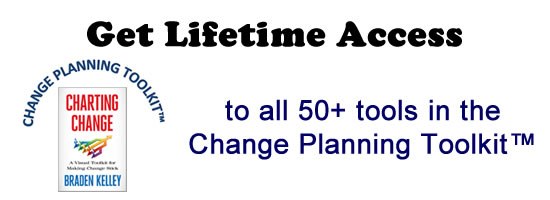How Innovation and Decentralization Will Forever Change Social Networking

The blockchain and cryptocurrency are more than just buzzwords nowadays. Bitcoin seems to be in the headlines every other day, while techies are all hanging on the looming promise of the blockchain’s revolutionary power.
William Mougayar’s The Business Blockchain: Premise, Practice, and Application of the Next Internet Technology describes blockchain technology’s promise of security and trust:
“The blockchain cannot be described just as a revolution. It is a tsunami-like phenomenon, slowly advancing and gradually enveloping everything along its way by the force of its progression,†he writes. “Plainly, it is the second significant overlay on top of the Internet, just as the Web was that first layer back in 1990. That new layer is mostly about trust, so we could call it the trust layer.â€
This trust is sorely needed, with the Facebook/Cambridge Analytica data scandal still fresh on the public’s mind. Fortunately, the blockchain, with its decentralized nature, is in a perfect place for innovation to flourish, and for security and trust to transform data privacy and social media alike.
The Failures of Conventional Social Networks
The problems with conventional social media are many. Bill DeLisle puts it well in his article on CryptoSlate, writing that “the social media economy is predicated on ad sales, which requires both a gross privacy invasion for users and strict guidelines for content creators.â€
Of course, it’s not just advertisements and sales that social media influencers are shooting for. Cambridge Analytica harvested the data of up to 87 million people for the purpose of influencing elections and achieving political gains. Even Reddit, once a bastion of user-first, anti-shill community interactions has become the target of political content marketing campaigns. This ties directly into the problem of “fake news.â€
Social media doesn’t currently reflect the world as it is, but rather shows news and articles based on algorithms that cater to users. On the one hand, it makes complete sense to show users content that they want to see — but on the other hand, self-perpetuating echo chambers are born of these algorithms, and users will share “news†without a care for its veracity. Those who would debunk said “fake news†oftentimes don’t see it, as the content is withheld from their feed in the first place.
So, when it comes right down to it, current social networks suffer from a lack of privacy and security, as well a lack of truth. There internet and social media are filled to the brim with data and information — the problem is that we don’t know which information is verified or trustworthy. This is where the blockchain and Mouyagar’s “trust layer†come in.
The Blockchain Breakdown
Most people understand the blockchain via bitcoin. The experts at the New Jersey Institute of Technology write:
“Created back in 2007, bitcoin is the world’s first decentralized virtual form of currency. As of fall of 2016, it is now an accepted form of payment in dozens of countries around the globe. As more nations continue to adopt this groundbreaking technology, it increases the chances that bitcoin will in fact become the next global form of currency and one of the few not tied to a specific nation’s economy or a banking system … Experts estimate than in just three years, by the year 2019, there will be five million active bitcoin users. Of this five million, fifty-one percent of users are expected to be outside the United States.â€
While bitcoin and cryptocurrencies have received a healthy portion of the media and the internet’s attention, they represent a very small fraction of the blockchain’s potential. That potential is vast, and it’s all because of decentralization. This essentially means that there is no central authority that owns the blockchain; no “bank†that issues cryptocurrencies or determines what their prices will be; and no way to forge, fudge, or falsify interactions that occur on the chain.
Another potential use for the blockchain comes in the form of smart contracts. Normally, you would go to a lawyer, notary, or other third party, and then pay them while they draw up your contractual document. After that, you’d send the document to its recipient and rely on the legal system to enforce the parameters and penalties of said contract. With smart contracts, you don’t need a third party like a lawyer or notary, and you don’t need to the legal system for enforcement — the blockchain does it all. Block Geeks has a fantastic description of how these smart contracts work:
“Suppose you rent an apartment from me,†they write. “You can do this through the blockchain by paying in cryptocurrency. You get a receipt which is held in our virtual contract; I give you the digital entry key which comes to you by a specified date. If the key doesn’t come on time, the blockchain releases a refund. If I send the key before the rental date, the function holds it releasing both the fee and key to you and me respectively when the date arrives. The system works on the If-Then premise and is witnessed by hundreds of people, so you can expect a faultless delivery. If I give you the key, I’m sure to be paid. If you send a certain amount in bitcoins, you receive the key. The document is automatically canceled after the time, and the code cannot be interfered by either of us without the other knowing since all participants are simultaneously alerted.â€
The above outlines just how decentralization works, as well as why people have been flocking to cryptocurrencies. This is also what lends transparency and trust to blockchain-based social networks.
The Advantages of Blockchain-Based Social Networks
With decentralized social networks, users can rest assured that they’re in control of their profiles and their data. Pini Raviv with Crypto Potato mentions that there’s a common theme in most conventional social networks’ individual terms of service: “that once you upload your content on the platform, the social network has the right to access your content for their own purposes, whether these are text, images, videos, and the like.â€
Decentralization ensures that there aren’t any organizations lording over your profile with legal rights to your content. It also ensures that you won’t be censored in any way, or eavesdropped upon by the social network, the people that own hardware the network is running on, or even by the government. That’s because true privacy and security — commodities fast disappearing in our modern world — are hallmarks of the blockchain.
Finally, these networks can change the way we consume and pay for content, with users able to award cryptocurrency to each other in the same that we award each other “likes†or “upvotes.†Imagine that you got $0.01 for every like you’ve ever received on a social media network, or that musical and video artists received full pay for every piece of content played — in contrast to Spotify or YouTube, who award instead of fractions of a cent. The possibilities of a decentralized network seem almost limitless.
There are already projects out there that are testing this concept. Steem.it and the Brave Browser are two such platforms. Though they’ve yet to reach widespread or mainstream appeal, rest assured that some day, one of these networks will.
It may not be here now, but soon decentralized networks will be all the rage. Remember the 1990s and all the hype around the nascent internet? Well, now the whole world depends on it. The blockchain is the next internet — rather, the next significant “layer†of the internet.
You can either trust me or we can set up a smart contract to make a bet on. Either way, time will tell who’s right.
Wait! Before you go…
Choose how you want the latest innovation content delivered to you:
- Daily — RSS Feed — Email — Twitter — Facebook — Linkedin Today
- Weekly — Email Newsletter — Free Magazine — Linkedin Group
 Andrew Heikkila, a tech enthusiast, and writer from Boise, Idaho, and a frequent contributor to Innovation Excellence. He also writes for Tech Crunch. You can follow him @AndyO_TheHammer
Andrew Heikkila, a tech enthusiast, and writer from Boise, Idaho, and a frequent contributor to Innovation Excellence. He also writes for Tech Crunch. You can follow him @AndyO_TheHammer
NEVER MISS ANOTHER NEWSLETTER!
LATEST BLOGS
Starbucks and Big Tobacco
Back in the 1950’s smoking was glamorous, and just about everybody who was anybody smoked cigarettes. Then came the discovery, to the shock of millions, that sucking smoke into your lungs might not be good for you. Then came another revelation that one of the substances in tobacco, nicotine, which was used as a poison by the Egyptians during the times of the Great Pyramids, is addictive. People then began a mass exodus from the consumption of nicotine via inhaled smoke.
Read MoreWal-Mart Goes Green – What about your company?
With the price of gas above $3.00, some companies (and hopefully all) are beginning to look at the fuel efficiency of their fleets. Wal-Mart is the most public example of this with its trucking fleet. Its efforts include:
Read More



